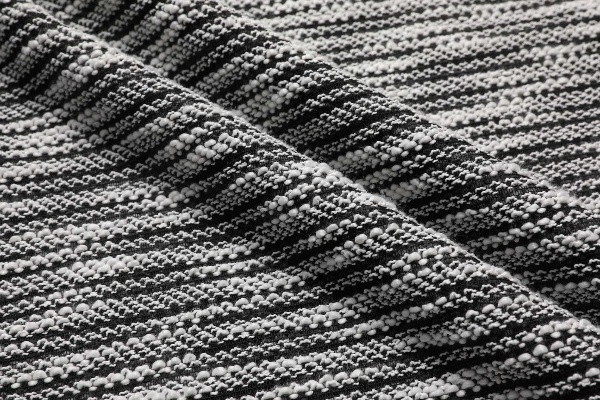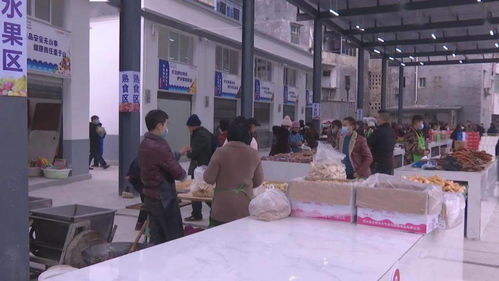The Classification of Printed Textiles
Printed textiles are a diverse category of products that utilize printed designs to enhance aesthetic appeal and functional properties. This classification primarily differentiates between two broad categories: woven and non-woven textiles. Woven textiles, often referred to as fabrics, consist of threads that are interlaced together in a patterned or grid-like structure. Non-woven textiles, on the other hand, are formed from continuous filaments without any interlacing, resulting in a more uniform texture. Additionally, there is a third category known as knitted textiles, which involve loops of yarn being pulled through each other to create a three-dimensional structure. The classification of printed textiles not only aids in understanding their structural differences but also influences their applications in various industries such as fashion, home decor, and sportswear.

Introduction: Printed textiles are a fascinating category of textile products that have been in existence for centuries. These textiles are characterized by the use of various printing techniques, such as screen printing, embroidery, and digital printing, to create intricate designs on fabrics. In this article, we will explore the different categories of printed textiles and provide some examples to illustrate their classification.
Screen Printing: Screen printing is a traditional printing technique that involves using a mesh screen to transfer ink onto a substrate. This method is commonly used for producing large-scale, uniform prints on cotton, linen, and other natural fibers. Screen printing is also known for its ability to produce high-quality images with minimal color bleeding.
Example: The fashion industry is one of the major users of screen printing technology. Many popular brands, such as H&M and Zara, use screen printing to create trendy clothing designs that are both functional and aesthetically pleasing.
Embroidery: Embroidery is a hand-stitching technique that adds intricate details to printed textiles. It is often used to add patterns, logos, or decorative elements to garments and accessories. Embroidery can be done manually or using specialized machines.
Example: The fashion industry is another major user of embroidery in printed textiles. Many designers incorporate embroidery into their collections to create unique and personalized pieces that stand out from the crowd.
Digital Printing: Digital printing is a modern printing technique that uses electronic imaging systems to transfer ink onto a substrate. This method is commonly used for producing small-scale, high-resolution prints on polyester, nylon, and other synthetic fibers. Digital printing is also known for its ability to produce eco-friendly prints that are biodegradable.
Example: The home furnishings industry is another major user of digital printing in printed textiles. Many manufacturers use digital printing to create personalized and custom-made furniture pieces that can be customized according to customer preferences.
Other Printing Techniques: In addition to the three main printing techniques mentioned above, there are several other methods used in the production of printed textiles. For example, heat transfer printing involves applying a hot transfer paper to the fabric and then transferring the design onto it using a laser printer or other printing device. Stencil printing involves using a stencil to create a pattern on the fabric before applying the ink.
Conclusion: In conclusion, printed textiles come in many different shapes and sizes, each with its own unique characteristics and applications. From traditional screen printing to modern digital printing techniques, these textiles have become an integral part of our lives and continue to evolve with new technologies and innovations. Whether you're looking for a trendy fashion item or a functional piece of furniture, there's likely a printed textile that meets your needs and preferences.
随着科技的飞速发展,纺织品行业也在不断探索新的生产技术和产品形式,印花技术作为纺织品生产中的重要环节,其分类方式对于理解其市场价值和优化生产流程具有重要意义,本文将围绕能印花的纺织品的分类进行详细阐述,并通过英文案例说明来进一步说明。
能印花的纺织品分类

天然纤维印花纺织品
天然纤维印花纺织品主要采用天然纤维作为原料,如棉、麻、丝等,这些纺织品具有天然的纹理和手感,同时环保、健康、舒适是其主要特点,纯棉印花T恤、麻质印花床单等。
合成纤维印花纺织品
合成纤维印花纺织品则是以合成纤维为原料,通过特殊的印花工艺制作而成,常见的合成纤维印花材料包括聚酯纤维、聚酰胺纤维等,这些纺织品具有色彩鲜艳、质地轻薄、抗皱等特点,聚酯纤维印花连衣裙、尼龙印花T恤等。
功能性印花纺织品
功能性印花纺织品结合了美观与实用性,具有防蚊、抗菌、防紫外线等功能,这些纺织品广泛应用于户外用品、家居装饰等领域,防蚊印花窗帘、抗菌运动袜等。
特殊工艺印花纺织品
特殊工艺印花纺织品采用特殊的印花技术,如热转移印花、数码印花等,具有独特的艺术感和时尚感,这些纺织品在设计和制作上更加注重个性化和创新性,立体花卉印花地毯、抽象艺术印花T恤等。
英文案例说明
以英文表格的形式,我们可以更直观地展示能印花的纺织品的分类及其英文案例:
| 分类 | 英文名称 | 示例产品 | 材料 | 功能特点 |
|---|---|---|---|---|
| 天然纤维印花纺织品 | Natural Fabric Printed Textiles | 纯棉印花T恤 | 纯棉纤维 | 天然纹理、环保、舒适 |
| 合成纤维印花纺织品 | Synthetic Fabric Printed Textiles | 聚酯纤维印花连衣裙 | 合成纤维 | 色彩鲜艳、质地轻薄、抗皱 |
| 功能性印花纺织品 | Functional Printed Textiles | 防蚊印花窗帘 | 合成纤维 + 防蚊功能 | 美观与实用性结合 |
| 特殊工艺印花纺织品 | Special Process Printed Textiles | 立体花卉印花地毯 | 特殊工艺技术 | 独特的艺术感和时尚感 |
通过上述分类和案例说明,我们可以更好地理解能印花的纺织品的分类方式及其市场价值,在纺织品生产中,根据不同的需求和特点,选择合适的印花技术和材料,可以制作出更多符合市场需求的产品,随着科技的不断进步,未来还将有更多的创新和突破,为纺织品行业带来更多的发展机遇。
Articles related to the knowledge points of this article:
Understanding the Price Ranges of Baodu Baile Textiles
The Evolution of Eastern Shopping and Donglong Textiles



